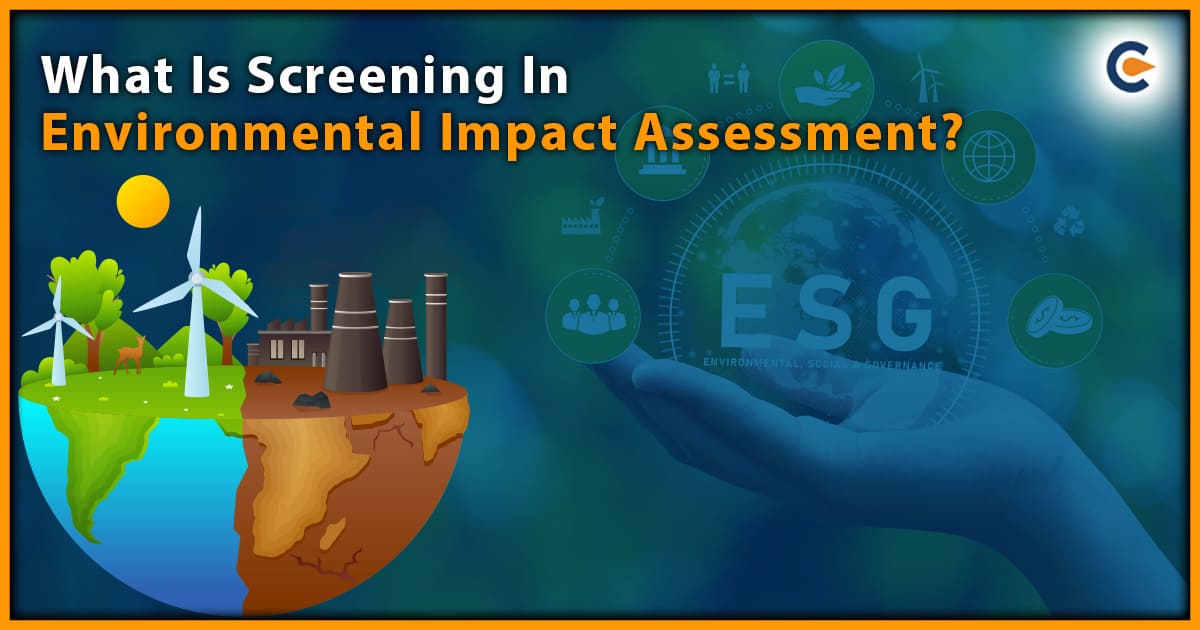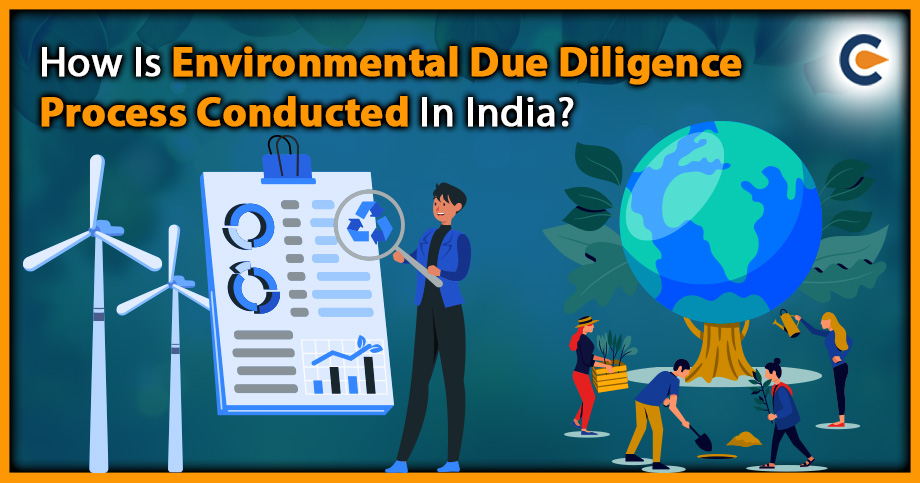The screening in environmental impact assessment is the initial stage of project development. It requires the project proponents to be aware of their responsibilities before making decisions regarding budget, project design, and execution plan. This screening stage specifically applies to Category ‘B’ developmental activities. If a Category B project meets the general conditions, it will be treated as a Category A project. Screening involves categorizing Category B projects into Category B1 or B2. Category B1 projects must follow all the stages applicable to Category A projects but are processed by the SEIAA/UTEIAA. On the other hand, Category B2 projects do not require an Environmental Impact Assessment (EIA) or public consultation.
Screening Conditions for Category B Projects
The applicable conditions for screening in environmental impact assessment are as follows:
- Cement plant projects with a production capacity of less than 1.0 million tonnes/annum, typically categorized as Category B, will be considered as Category A if they are located wholly or partially within 10 km from the boundary of certain specified areas.
- Stand-alone grinding units are classified as Category B.
- The State/UT level Environmental Impact Assessment Authority (SEIAA) will make decisions based on the recommendations of a State/UT level Expert Appraisal Committee (EAC) for prior environmental clearance.
- Suppose there is no SEIAA or State/UT level State Environment Appraisal Committee (SEAC). In that case, the Ministry of Environment, Forest, and Climate Change (MoEF) will evaluate Category B projects at the central level.
- The State/UT level EAC will screen projects or activities in Category B, and the SEAC will convene at least once every month.
- If a Category B cement plant project/activity, following the proposed expansion of capacity/production or fuel change, meets the criteria for Category A in terms of production capacity, clearance from the Central Government is required.
Criteria for Classification of Category B1 and B2 Projects
The categorization of Category B projects or activities into B1 or B2 (excluding projects or activities mentioned in item 8(b) of the Schedule to the EIA Notification, 2006) will be determined based on whether the project or activity needs further environmental studies for the preparation of an Environmental Impact Assessment (EIA) before obtaining environmental clearance. The State Environment Appraisal Committee (SEAC) will decide on the need for such studies after examining applications for environmental clearance for Category B projects or activities, considering the nature and location specifics of the project. Projects that require an EIA report will be classified as Category B1, while the remaining projects will be classified as Category B2 and will not require an EIA report or public consultation.
Application for Prior Environmental Clearance
The application for screening in environmental impact assessment is as follows:
- Once the project proponent has identified a site and conducted a pre-feasibility study, they must apply for prior environmental clearance. This involves filling out Form 1 from Annexure IV of the official notification and submitting it, along with the pre-feasibility report and draft Terms of Reference (ToR) for Environmental Impact Assessment (EIA) studies, to the relevant authority. For Category A projects, the application goes to the Ministry of Environment, Forest and Climate Change (MoEF) of the Government of India, while Category B projects are submitted to the State Level Environment Impact Assessment Authority (SEIAA).
- Prior environmental clearance is mandatory before initiating any construction work or preparing the land for the identified site or project, except for land acquisition purposes.
- Suppose the application is for a specific developmental activity that includes area development as part of the project proposal. In that case, it will be considered a separate developmental activity outside the scope of 8a and 8b of the Schedule.
Siting Guidelines Before Screening in Environmental Impact Assessment
These guidelines provide recommendations for stakeholders to consider when selecting sites for developmental projects to minimize potential environmental impacts. Industries should be situated to minimize the adverse effects on both immediate and distant surroundings. Certain areas, characterized by their ecological significance or sensitivity and specific land uses, are particularly vulnerable to industrial effects. To safeguard these sites, industries are encouraged to maintain certain distances from the following areas:
- Ecologically and/or otherwise sensitive areas: Ideally, 5 km, with the specific distance determined based on climatic conditions by the appropriate agency.
- Coastal Areas: Ideally, at least ½ km away from the high tide line (HTL).
- Flood Plains of Riverine Systems: Ideally, at least ½ km away from flood plains or modified flood plains impacted by upstream dams or flood control systems.
- Transport/Communication Systems: At least ½ km from highways and railway lines, ideally.
- Major Settlements (with a population of 300,000): Maintaining a distance from major settlements can be challenging due to urban sprawl. When siting an industry, if the notified boundary of any major settlement is found to be within 50 km from the project boundary, the projected growth direction of the settlement for at least a decade should be assessed.
General Siting Factors
Factors to be acknowledged in a selected site:
- Land should not be converted for non-forest activities to support the industry, as outlined in the Forest Conservation Act of 1980[1].
- Conversion of prime agricultural land into an industrial site should be avoided.
- The acquired land should be sufficiently large to establish appropriate green cover, including a green belt surrounding the industry’s boundaries.
- The layout of the industry should harmonize with the area’s landscape, ensuring that the scenic features of the place remain unaffected.
- If an associated township is planned for the industry, locating it in an area with a physiographic barrier between the industry and the township is advisable.
Requirements for Screening during EIA
The necessary requirements for Screening in Environmental Impact Assessment (EIA) include:
- Screening criteria: Establishing clear and objective criteria, which may include project scale, location, potential environmental impacts, and sensitivity of the receiving environment.
- Comprehensive project information: Adequate project information should be provided by the proponent, and it should include the project description, scope, size, location, and any available data on potential environmental impacts.
- Expert evaluation: The screening process should involve the expertise of qualified professionals, such as environmental scientists, engineers, and planners, who can assess the project’s potential impacts based on the provided information and relevant regulations.
- Legal framework: Screening should be conducted within the context of applicable laws, regulations, and guidelines related to environmental assessment.
- Stakeholder engagement: It is crucial to involve relevant stakeholders, including local communities, indigenous groups, non-governmental organizations, and government agencies, in the screening process.
- Documentation: Screening in environmental impact assessment should be well-documented, with clear records of the criteria used, project information considered, expert evaluations, and stakeholder engagement, which helps build trust and allows for accountability.
Conclusion
Screening in environmental impact assessment plays a vital role in identifying projects or activities that require further assessment and those that can proceed with minimal scrutiny. It serves as an initial stage of project development, allowing proponents to understand their obligations and make informed decisions. Classifying projects into different categories, such as Category A and Category B, helps determine the level of environmental studies and public consultation required. By applying screening criteria and guidelines, potential environmental impacts can be identified and addressed early in the project lifecycle. Screening is a significant criterion for Category B projects, and it must be done with expert advice to comply with all the legal requirements and to avoid penalties.
Read Our Article: What Are The Stages Of Environmental Impact Assessment?











